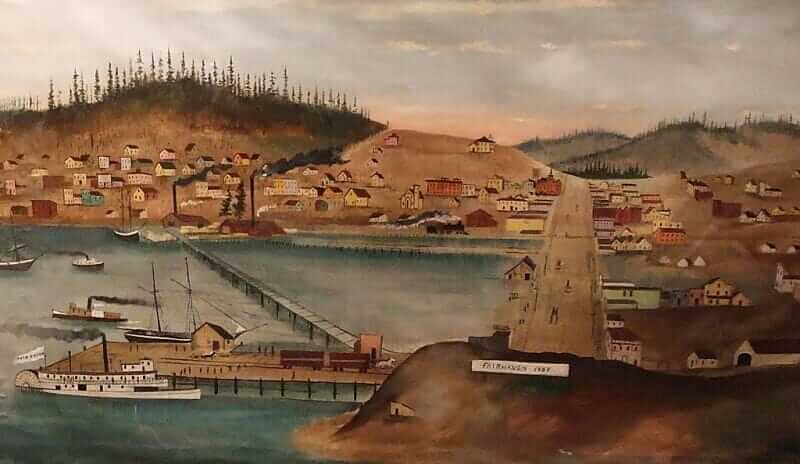Fairhaven History
Founded in 1883, by Daniel J. Harris, the “Dirty Dan” of local lore and legend. He named this area Fair Haven from the native “see-see-lich-em”, meaning “safe port” or “quiet place”. Since the 1890s Fairhaven has experienced booms and busts. The 21st century has ushered Historic Fairhaven into its most dramatic building boom since the 1800s. The hundred year old buildings have been joined by modern structures, housing condos, offices, artist studios, shops, hotels and restaurants. The diversity and individuality that forged the area 130 years ago lives on.
Settled in 1853 Fairhaven was one of four early towns that consolidated in 1904 to create the City of Bellingham. In the late 19th century Fairhaven experienced a series of boom and busts, in part due to anticipation by real estate investors who were led to believe that the town would become the terminu of the Great Northern Railroad.
By 1890, Fairhaven was a thriving city. The boom busted, however, when Seattle was chosen as the terminus and the national Panic of 1893 and subsequent changes to liquor laws during Prohibition caused Fairhaven’s vitality to wane.
During the 20th century Fairhaven’s deep-water frontage proved ideal for manufacturing because of its access to coal and timber. Its lumber and shingle mills and large salmon cannery were among the area’s prime industries.
After WWII Fairhaven’s population declined when business and industry shifted to downtown Bellingham.
In the early 1970s Fairhaven experienced a renaissance and 1977 was designated as a National Historic District. The village includes 17 historic buildings built between 1888 and 1929.
What remains today of Fiarhaven’s once-thriving commercial center is a relatively small core, but our community derives a strong sense of identity from our history.
